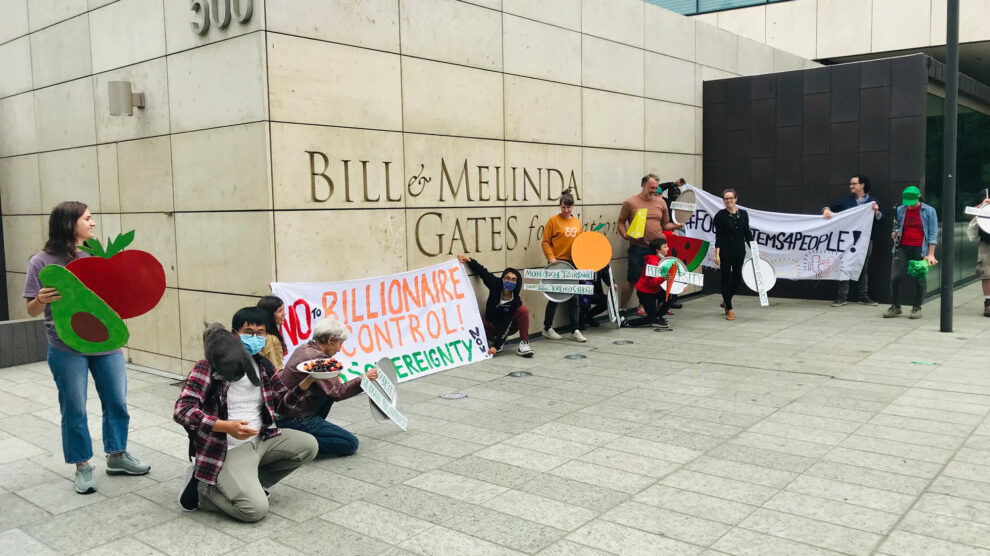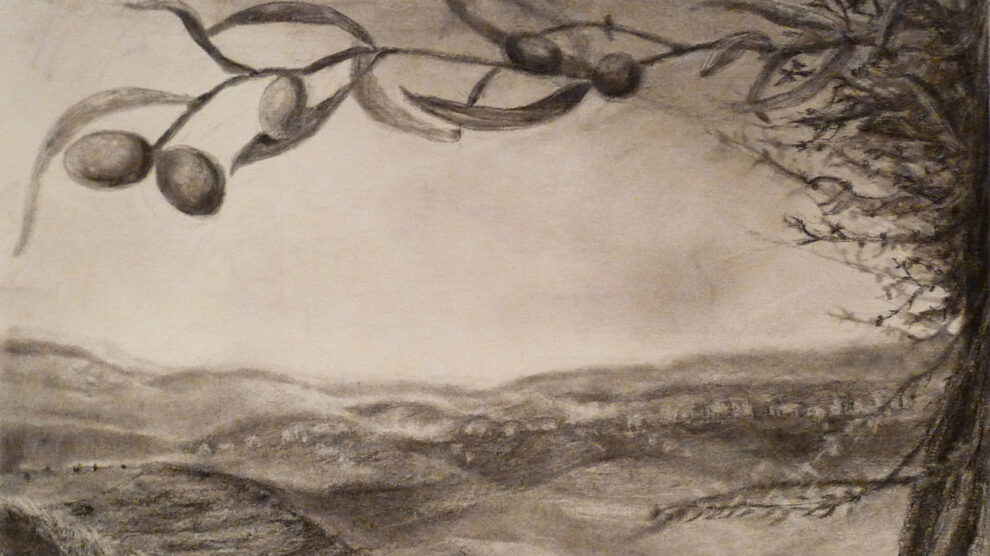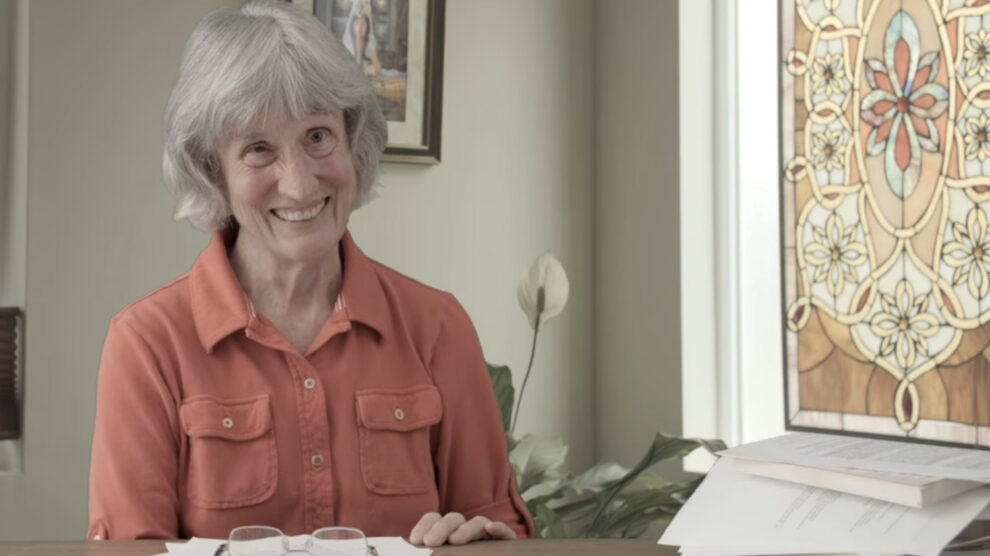Imagining the Possible: An Interview with Donna Haraway
Part 3: On Organizing and Reading to Change the World
By Katherine Bryant and Erik Wallenberg
Volume 23, number 3, Bio-Politics
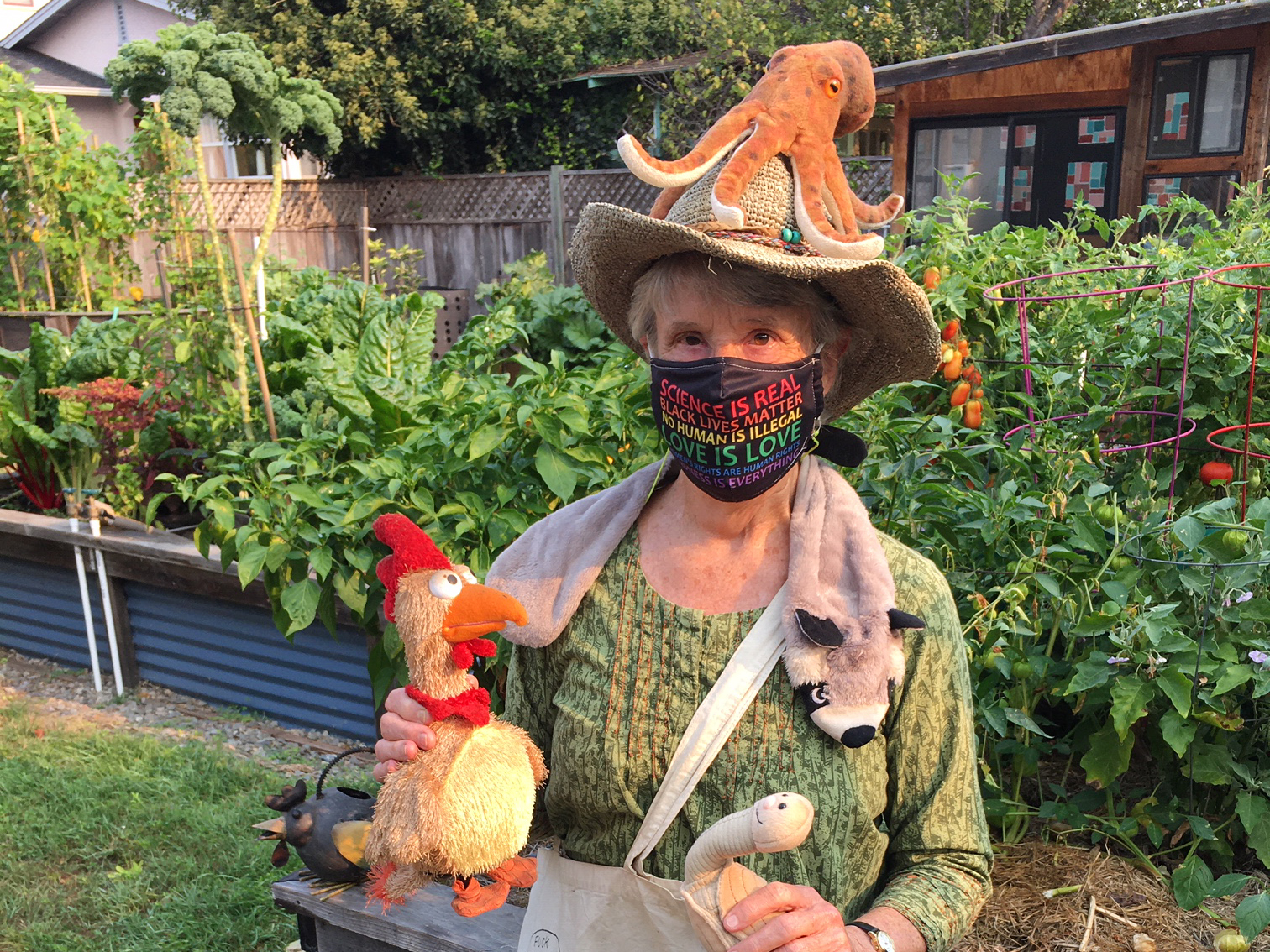
Donna Haraway is Distinguished Professor Emerita in the History of Consciousness Department at the University of California, Santa Cruz. During her prolific career she has written dozens of books and articles bringing together intersecting fields of study including science, technology, feminism, climate change, and anthropology. In the summer of 2020, Katherine Bryant, secretary of Science for the People, and Erik Wallenberg, Acquisitions Editor at Science for the People, spoke with Haraway about the crises and rebellions of 2020, prospects for the future, and what we might learn from the history of past struggles. This interview has been edited for length and clarity.
This is the third and final part of a three-part interview with Dr. Haraway. You can read the first part here and the second part, which was published in the “Bio-Politics” issue of Science for the People, here.
Erik Wallenberg: You raise the importance of looking at the positive. As an environmental historian, I love to teach your essay “Teddy Bear Patriarchy.” And the Museum of Natural History has finally announced that they will finally take down the statue of Theodore Roosevelt at its entrance. It took an antiracist uprising across the country to finally bring that down. As a sort of speculative exercise, what do you see as a good replacement for that racist statue? What sort of person, or better yet what kind of species, might we imagine greeting us at the Museum of Natural History to set up a different narrative?
Donna Haraway: My only regret is that “Teddy Bear Patriarchy” will be less relevant once that statue comes down (laughs). I’m only joking.
EW: Well it depends on what they replace it with.
DH: Right. But yes, bye-bye Teddy and good riddance! And it’s not just Roosevelt, but clearly the positioning of the African and Native American person and the horse; the whole thing. It’s not all that hard to imagine a commission that brings together representatives of the peoples who have lived in that area of New York where the Natural History Museum is actually sited with peoples who have been educated in the museum, peoples whose knowledge are suppressed actively by what the museum has done in its cultural halls as well as its biology halls.
What would happen if a commission of folks were brought together specifically with the charge to develop a frontispiece for the museum to occupy that space? And give them some money and have a contest and then maybe some kind of vote. What would happen if a political process were instigated to produce a monument that the city wants to live with for the next hundred years? Or maybe monuments should come with a due date, with an expiration date? Maybe there’s a kind of twenty-year life cycle or something? I don’t know, I’m just fantasizing. I would like to see art commissions brought together, and New York is full of qualified people to serve on such a commission. God knows there are a lot of unemployed artists right now who could use a little money from a commission to develop monuments and then put them up for a vote.
There’s got to be something that truly brings together natural history in New York. It seems to me there’s got to be some way that the museum remains visually accountable to its history of the education of immigrants; its history in the exportation of American scientific and natural industry practices as part of American imperialism. It’s got to remember this but remember it in a way that affirms ways of living and being on this land, ways of doing and being, natural and cultural history, let’s just say plain old history; a way that somehow configures the complexity of human beings and more than human beings here that really does history otherwise. Because the Teddy Roosevelt statue does history. It establishes an historical narrative. I think it’s good that an historical narrative be proposed at the entrance of the museum, but how?
Katherine Bryant: Can you talk about sustaining radical action, but in university structures? Many of us meet a lot of resistance from the top at our institutions. Any strategies for dealing with this or thoughts on how power structures operate in universities and how faculty might respond?
DH: I’ll answer this from the point of view of my time at the University of California, Santa Cruz, which is where I taught for thirty-odd years and remain active as a retired professor in various ways. There’s no question that our public universities are barely public institutions and that the strong privatization and corporatization of the universities and expansion of the administrative structures and the growth of the militarized police forces in the universities is not an irrelevant piece of this matter. All this has been going on over a period of decades. It didn’t happen overnight. There are periods of intensification of this. The period of Reagan, of intensification of the neoliberalization of the University—we all live it in our bodies.
Simultaneously I also know, in my body and in my friendships and my colleagues, the way people continue to teach, continue to produce. I’d point to the Center for Creative Ecology that TJ Demos has put together; the way that Beth Stephens has worked on art and sexuality, the eco sexuality projects; the way that STEM graduate students were major activists in the uprisings against Trump and the defense of science movements; the ways that the Center for Cultural Studies continues to produce really progressive events, speakers, alliances, study groups. I know that people in our daily lives continue to work in really strongly positive ways at a great cost. I know that people work too much and that this becomes harder and harder to pull off, especially when so many of our faculty are in the precariat.
I’ve spoken at a number of labor events related to strikes by adjunct faculty, lecturers, and so forth. I’m aware of the strike issues and have participated in the COLA strike, the cost-of-living strike by graduate students. The UC Santa Cruz administration continues to try to enforce disciplinary measures against some of the strikers even though it was a kind of milquetoast agreement. I think that the cost to people who can’t pay rent, by which I mean graduate students and adjunct faculty and for that matter undergraduates, the number of our students who are frankly hungry, who are living in their cars on the street. This is a major public university. This is beyond a scandal.
People remain active. Organizations are in place. Academic Senates’ take positions. Unions take positions. A lot is still going on but I think the cost to people is huge, and especially now with the questions of distance learning. I’ve talked to a colleague of mine who teaches Chinese culture and history at San Jose State and she says she’s spending an extra twenty hours a week in one-to-one conversations with students who are in crisis. That’s totally invisible to the institution.
In the Cal State System, even more than the UC system, you have a whole lot of people who are on the margins economically and for whom homelessness is either a fact or a risk and who are trying to take care of family members. Many might be first-generation University students. All of our institutions are actually more diverse ethnically and racially without enough of the infrastructure to make that possible. So that if you take account of the blocking of the accumulation of generational wealth you’ve got first-generation students who are responsible for taking care of their families. There may be enough loans or grants or whatever in the narrow sense for that student, but not for the social fact of generational poverty. I mean I could go on and on.
EW: We’re living through climate chaos, a global pandemic, and these inspiring uprisings against racism, not just in the US but really around the world. And you talk about the importance of stories to understanding the world, understanding relationships, how we might make positive change. I’ve heard you talk about reading widely and voraciously. I’m wondering if you can tell us some of the things you’re reading that either are inspiring you or that you’re finding interesting in this time, fiction or otherwise? Are there any texts you recommend to broaden our ideas, to engage how we learn and how we think about making change and imagining different futures?
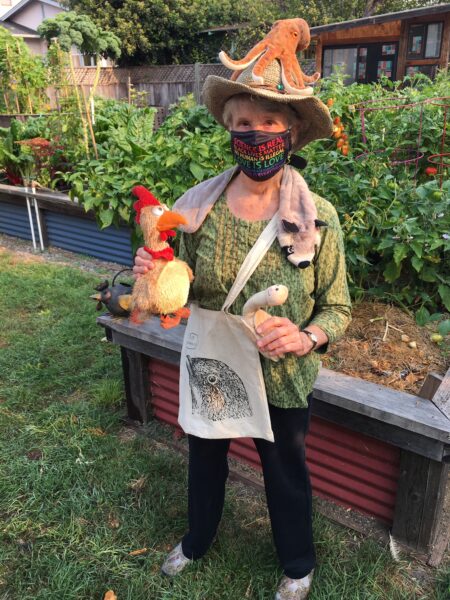 DH: I think the telling and reading and sharing of stories—visually too, not just textually, storytelling has many modalities—help us imagine what’s possible or for that matter what is. It’s one of the reasons that I am modest in my consumption of critique. I feel like the job of storytelling, and writing good history too, is an opening up of, giving a sense of what’s actually happening in the world and what we’re for.
DH: I think the telling and reading and sharing of stories—visually too, not just textually, storytelling has many modalities—help us imagine what’s possible or for that matter what is. It’s one of the reasons that I am modest in my consumption of critique. I feel like the job of storytelling, and writing good history too, is an opening up of, giving a sense of what’s actually happening in the world and what we’re for.
Surely something you won’t otherwise know about is Cattail Stories by Graciela Trevisan. This is privately published but will probably come out with a regular publisher soon. This is a series of short stories rooted in cattails that follows a group of characters—in some way speculatively fabulated, indeterminate, between realism and fabulation—a series of women in the town who confront the mayor, confront the church, take care of each other, take care of kids in the town. It really is interesting speculative fabulation rooted in these amazing, beautifully, magically written cattail stories. So I really recommend this very fine little book.
I just finished reading N. K. Jemisin, The City We Became. I have been a fan of Kim Stanley Robinson’s New York 2140, and I think reading these two New York books together is really interesting. They’re both science fiction and they both proposed a New York in transformation. They recompose New York. In the case of N. K. Jemisin the various boroughs are instantiated in individual people who discover that they are the Bronx or they are Brooklyn or they are Manhattan and are really horrified by this. It’s really not a pleasant discovery. And they are facing an enemy that wants to take over New York. The city is about to become; the city is about to be born. There were very few cities that have actually become cities. There were cities that almost did like New Orleans but then they were blocked. Or Sao Paolo did it but stopped. So there’s this really interesting imagination of the generation of world cities of the Earth.
So all of these characters in N. K. Jemisin’s book—variously situated people of color in New York, variously situated ethnicities in New York. The one borough that refuses finally to ally with the city we became is Staten Island which is instantiated by a white Italian Staten Islander who wants desperately to go to Manhattan. He wants desperately to get on the ferry and cross and go over and knows about the threat but who ends up allying with the enemy. The one borough that refuses to ally with the city—Staten Island—is really important because it proposes the possibility of white alliance and [deals with] the psychological structures and the social structures. So I think The City We Became is a really interesting exploration of the possibility of transformation.
Put that together with Kim Stanley Robinson’s New York 2140, sort of after the floods, a near future, climate change rooted fiction that proposes taking over the banks. The financial speculations in that book are fascinating; the kind of renters alliances. Those two are really great books read together.
And nonfiction! Bruno Latour’s Down to Earth. This develops the critical zone idea a little bit, but it’s a book for Earthlings. And I want Marxists to read it and relax their desire for this guy to be a Marxist which he will never be. I want us to read this with a kind of open sensibility to what is being proposed here.
Patricia Zavella has been a colleague for years, and she just published this really important movement for reproductive justice book which takes up the history of empowering women of color through social activism—that’s the subtitle—but it does it through the movements for reproductive justice. It’s a really important book.
And Marilyn Strathern‘s book, Relations. Marilyn is such a crazy anthropologist and she does relations and relationality like nobody else I know. It’s just such smart thinking. She’s a British social anthropologist and she’s fun and funny and smart and hard to read in all the right ways.
And I need to add one more book to my collection: Complete Spanish Grammar. I’m actually making a serious effort to learn Spanish well enough to be able to read the contemporary fiction and scholarship coming out of Latin America and Mexico. I’ve been provoked to do that by colleagues of mine in Colombia and in Mexico and finally coming to terms—I read and speak French which is all well and good and I’m really happy about that—but I didn’t know Spanish and I just feel like I can’t be a serious person in California without taking that seriously.
About the Authors
Katherine Bryant, PhD, is the Secretary of Science for the People, member of the Biology and Society Working Group, and a postdoctoral fellow at the Wellcome Centre for Integrative Neuroimaging at the University of Oxford. During her PhD, she helped organize undergraduates, graduate students, and faculty to fight against austerity measures implemented by the university administration. In addition to conducting research on the evolution of the human brain, she works to promote the work of feminist neuroscientists through the Neurogenderings group, and to support and advance the work of Science for the People.
- Twitter: @evoneuro
- Instagram: @katsqwerl
- Facebook: /katherinelbryant
Donna Haraway, PhD, is Distinguished Professor Emerita in the History of Consciousness Department at the University of California, Santa Cruz. She earned her PhD in Biology at Yale and writes and teaches in science and technology studies, feminist theory, and multispecies studies. At UCSC, she is an active participant in the Science and Justice Research Center and Center for Creative Ecologies. Haraway’s work explores the string figures composed by science fact, science fiction, speculative feminism, speculative fabulation, science and technology studies, and multispecies worlding. She is the author of several books including Staying with the Trouble: Making Kin in the Chthulucene.
Erik Wallenberg is a PhD candidate in the History Program at CUNY Graduate Center. His research is focused on the portrayal of environmental crises, politics, and science in activist theater. He has taught classes in environmental history, global history, and environmental justice at Brooklyn College and the University of Vermont and is Acquisitions Editor at Science for the People.


